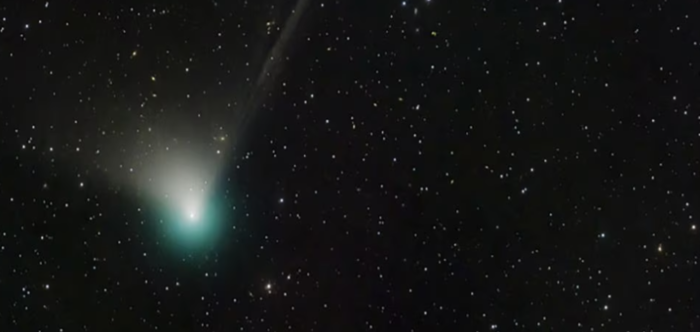The comet was detected by the Zwicky Transient Facility (ZTF) program in March 2022 as it passed through Jupiter's orbit. The observation was made through the Samuel-Oschin telescope at the Palomar Observatory in California (USA).
ADVERTISING
According to the National Observatory, the closest point of this “relatively small” comet – around 1 km in diameter – to Earth will be on February 1st.
Comets are objects made primarily of frozen gases, rock and poewrath, and become more visible when they get closer to the sun, and their ice starts to turn into gas, forming a cloud around them.
The last time C/2022 E3 was visible, the Earth was still inhabited by Neanderthals, as said by the astronomer Filipe Monteiro, based on the orbital period of this celestial body, which is believed to have its origin in the Oort Cloud – one of the most distant regions of our solar system.
ADVERTISING
"Some predictions suggest that this comet's orbit is so eccentric that it is no longer in orbit around the Sun. If so, then it will not return and will simply continue away," informed, through a note, the National Observatory.
How to observe
Observation will begin to be facilitated in the first days of February, “with a better observation height from the 4th of February towards the north and below the star Capela”, explains Monteiro.
As the days go by, the comet will be seen higher in the sky and with more visibility time. At its closest approach, the celestial body will be about 42 million kilometers from Earth.
ADVERTISING
The comet can only be seen with the naked eye if the sky conditions are very favorable, that is, with a dark sky, no moon, and no light pollution. This could be the first comet of the year seen with the naked eye, and the first after Comet Neowise, which appeared in 2020.
“To observe the comet, the most sensible thing is to use binoculars, which will facilitate the observation of this illustrious visitor. In addition, it is important to highlight that it is not an easy task to find a comet in the sky. Therefore, in addition to instruments (binoculars, telescopes, cameras), it is interesting that people look for a place far from urban centers, thus avoiding light pollution. To make it even easier to observe the comet, the best thing to do is look for the comet when the moon is no longer in the sky”, explains Monteiro.
For novice observers, he suggests that the ideal date is February 10, between 19 pm and 21 pm, when the comet will find itself very close to the planet Mars.
ADVERTISING
"One strategy that can be used by beginners as well as casual photographers is to try to photograph the comet by pointing your camera at its approximate location in the sky and taking long exposure shots of 20 to 30 seconds," he said.
“When viewing the images, you will possibly notice a fuzzy, tailed object. Using this technique, many are managing to photograph the comet even if they don't see it in the sky,” she said.
(With Brazil Agency)
Read also

Receive news and newsletters do Curto News by Telegram e WhatsApp.
ADVERTISING





